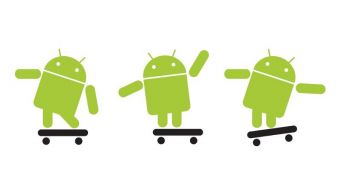Mountain View-based Internet giant Google is getting ready to bring to the market a new flavor of its Android mobile operating system, one that will arrive on devices under the name of Ice Cream Sandwich (ICS). We already knew that the new Android flavor was bound to land later this year, as confirmation on the matter emerged from Google's Eric Schmidt himself, and some more details on it have just started to emerge.
Just as previously reported, the new version of Android was meant mainly at bringing along a unification of the different OS flavors that Google made available before.
To be more precise, Ice Cream Sandwich is meant to put together the Gingerbread arm of Android, the one that was meant for smartphones, and the Honeycomb iterations, those aimed at tablet PCs, which boast larger screens.
“Although Honeycomb remains tablets-only, the upcoming Ice Cream Sandwich (ICS) release will support big screens, small screens, and everything in between,” Scott Main notes in a blog post on Android Developers.
“This is the way Android will stay from now on: the same version runs on all screen sizes,” he continues.
Since there will be a change in the matter in which devices are supported, developers who came up with applications for a certain type of devices will also have to make modifications to their software.
This applies mainly to applications that have been created for tablet PCs running under the Honeycomb platform flavor, and which were coded to fit only the larger screen of these devices.
In Ice Cream Sandwich, all screen sizes are supported, which means that applications will also have to offer support for both smartphones and tablets, or anything else, and developers will need to modify their software to make sure that this happens.
In the said blog post, Scott Main notes that developers can also opt to prevent their applications from installing on smaller screens, in addition to being able to add support for these screens in the APK.
He also offers a series of details on what developers will need to do to ensure wider device compatibility, all of which can be found on Android Developers here.

 14 DAY TRIAL //
14 DAY TRIAL //